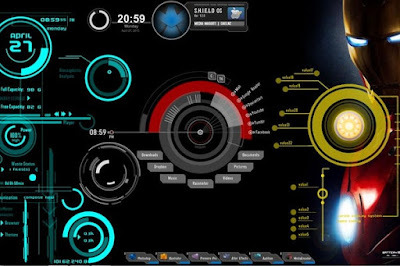IBM Qunatam Computer
Quantum Computers:-
Quantum computers could spur the development of new breakthroughs in science, medications to save lives, machine learning methods to diagnose illnesses sooner, materials to make more efficient devices and structures, financial strategies to live well in retirement, and algorithms to quickly direct resources such as ambulances.
But what exactly is quantum computing, and what does it take to achieve these quantum breakthroughs? Here’s what you need to know.
A New Kind of Computing:-
We experience the benefits of classical computing every day. However, there are challenges that today’s systems will never be able to solve. For problems above a certain size and complexity, we don’t have enough computational power on Earth to tackle them.
To stand a chance at solving some of these problems, we need a new kind of computing. Universal quantum computers leverage the quantum mechanical phenomena of superposition and entanglement to create states that scale exponentially with number of quoits, or quantum bits.
Quantum Computing Fundamentals:-
All computing systems rely on a fundamental ability to store and manipulate information. Current computers manipulate individual bits, which store information as binary 0 and 1 states. Quantum computers leverage quantum mechanical phenomena to manipulate information. To do this, they rely on quantum bits, or quoits.
Here, learn about the quantum properties leveraged by quoits, how they're used to compute, and how quantum systems scale.
Inside a Quantum Computer:-
There are a few different ways to create a quoit. One method uses superconductivity to create and maintain a quantum state. To work with these superconducting quoits for extended periods of time, they must be kept very cold. Any heat in the system can introduce error, which is why quantum computers operate at temperatures close to absolute zero, colder than the vacuum of space.
Take a look at how a quantum computer’s dilution refrigerator, made from more than 2,000 components, creates such a cold environment for the quoits inside.
Quantum Computing Fundamentals:-
All computing systems rely on a fundamental ability to store and manipulate information. Current computers manipulate individual bits, which store information as binary 0 and 1 states. Quantum computers leverage quantum mechanical phenomena to manipulate information. To do this, they rely on quantum bits, or quoits.
Here, learn about the quantum properties leveraged by quoits, how they're used to compute, and how quantum systems scale.
Quantum Properties:-
Three Quantum Mechanical Properties:-
Superposition, entanglement, and interference — are used in quantum computing to manipulate the state of a quoit.
Superposition:- Superposition refers to a combination of states we would ordinarily describe independently. To make a classical analogy, if you play two musical notes at once, what you will hear is a superposition of the two notes.
Entanglement:- Entanglement is a famously counter-intuitive quantum phenomenon describing behavior we never see in the classical world. Entangled particles behave together as a system in ways that cannot be explained using classical logic.
Interference:- Finally, quantum states can undergo interference due to a phenomenon known as phase. Quantum interference can be understood similarly to wave interference; when two waves are in phase, their amplitudes add, and when they are out of phase, their amplitudes cancel.
Quantum Computation:-
There are a few different ways quantum systems use quantum properties to compute. Let’s investigate one type of algorithm designed for current quantum hardware, which uses quantum computing to find the “best” solution among many possible solutions.
This algorithm can be used to simulate a molecule by determining the lowest energy state among various molecular bond lengths. For each possible bond length, parts of the energy state are represented on a quantum processor. Then, aspects of the quantum state are measured and related back to an energy in the molecule, for the given electronic configuration.
Scaling Quantum Systems:-
What does it take to create a fault-tolerant quantum system? To increase the computational power of a quantum computer, improvements are needed along two dimensions.
One is quoit count; the more quoits you have, the more states can in principle be manipulated and stored. The other is low error rates, which are needed to manipulate quoit states accurately and perform sequential operations that provide answers, not noise.
A useful metric for understanding quantum capability is quantum volume. It measures the relationship between number and quality of quoits, circuit connectivity, and error rates of operations. Developing systems with larger quantum volume will lead to discovering the first instances of applications where quantum computers can offer a computational advantage for solving real problems.
REFERENCE FROM:- wikipedia.org
TIH BLOG:-https://theinnovationhub2019.blogspot.com/
THIS BLOG WRITTEN BY TIH TEAM MEMBERS:- SHIVANI SAHU, DIKSHA SOLANKI, AASHIKA BHATI.
Department:- Computer Science
Email id:- theinnovationhub2019@gmail.com
"The Innovation Hub 2K19" Join us on Following Sites:- You tube Channel like...https://www.youtube.com/channel/UCma0poNdmpG6D959dLfeAEg
Twitter link:- https://mobile.twitter.com/TheInnovationH1
Facebook Link:- https://m.facebook.com/The-Innovation-Hub-2019-1214430052053956/?ref=bookmarks
Instagram Link.:- https://www.instagram.com/the_innovation_hub_2019/
Linkedin Link:- https://www.linkedin.com/in/the-innovation-hub-7a3286186/
THANKYOU!!




🔥
ReplyDelete